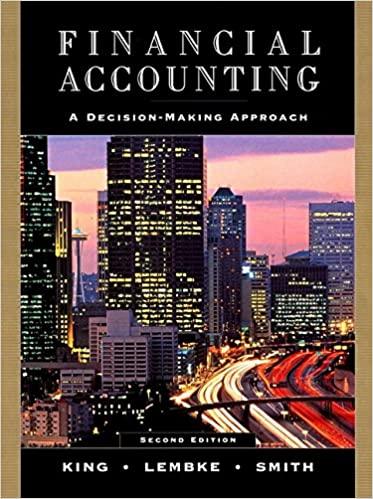Multiple Choice: Accounting for Tangible Assets Select the correct answer for each of the following. 1. Straight-line
Question:
Multiple Choice: Accounting for Tangible Assets Select the correct answer for each of the following.
1. Straight-line depreciation is used for reporting purposes by many companies because:
a. It is always the best measure of the assets used up in the production process during the period.
b. It represents a systematic allocation of the cost of assets equally over the periods used.
c. Tax laws require use of straight-line depreciation for most tangible assets.
d. Noncurrent assets are used up so quickly that it makes little difference which depreciation method is used.
e. None of the above.
2. K Corp. recently purchased a new robotics production system to produce computer chips. The field is changing rapidly and new production processes are being developed each year. The company should use which of the following methods of treating asset costs?
a. Straight-line depreciation.
b. Accelerated depreciation.
c. Permanent capitalization of all costs with no depreciation.
d. Record the full cost of the assets as an expense in the year of purchase.
e. None of the above.
Ace Bearing Co. has been depreciating delivery equipment on a straight-line basis on its tax return. If it begins to use an accelerated method on the tax return for newly acquired equipment:
a. The depreciation expense listed on the tax return will increase but taxes paid will not change.
b. The salvage value will have to be set at a higher level for the new equipment.
c. Ace can continue to use straight-line depreciation for its financial statements.
d. Ace will be in violation of generally accepted accounting principles because the use of two different depreciation methods by the same company is not permitted.
4. An asset’s depreciable base:
a. Is assumed to be zero in computing depreciation expense under double-declining-balance depreciation.
b. Is computed by deducting the estimated salvage value from the cost of the asset.
c. Is computed by deducting the estimated salvage value of the asset from the balance in accumulated depreciation.
d. None of the above.
Step by Step Answer:

Financial Accounting A Decision Making Approach
ISBN: 9780471328230
2nd Edition
Authors: Thomas E. King, Valdean C. Lembke, John H. Smith





